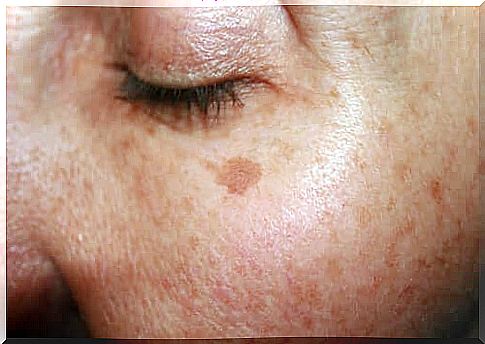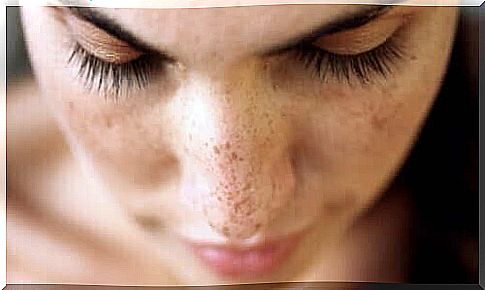Birthmarks And Moles: Why Do They Appear?

It’s not uncommon for newborns to have skin rashes and pimples that disappear a few weeks after birth. However, some birthmarks and moles remain and may even become more intense as the child grows up.
In most cases , moles are not a health problem. However, they affect a person’s appearance, in a positive or negative way, depending on their characteristics. Only very rarely do they increase the risk of skin cancer or other skin conditions.
In general, there are many myths about moles. Some people think they are the result of what a mother-to-be craved during her pregnancy or maybe because of something she ate. However, there is no scientific basis for such statements.
Birthmarks and freckles and moles, oh my gosh!

Birthmarks are changes in the skin color of a newborn. Sometimes these spots form during pregnancy while sometimes they show up a few days or weeks after delivery. Scientists believe that about 80% of people are born with a birthmark, a birthmark or some other kind of spot.
Some of them remain throughout a person’s life and others go away over time. The truth is that you should always consult your pediatrician so they can examine them and determine if they are harmless regardless of:
- their size
- the location
- the color or shape
Many spots, especially the brown ones, are not visible on a baby immediately after birth. They have a lighter shade during the first months of life, which is why they go unnoticed. However, they usually darken over time. There are different types of moles with different characteristics (English link).
Pigment spots
There are two types of moles: pigmented spots and vascular spots. Within these two large groups, there are several subgroups with different characteristics. When it comes to pigmentation spots, there are 3 groups:
- Freckles. These are the most common spots and can appear anywhere on the body. They sometimes multiply as the child grows. However, if there are many and larger than 3 millimeters, it may be due to neurofibromatosis.
- Archipelago spots. These are blue-gray and are often located on the buttocks or lower back. They are more common in dark-skinned people and almost always disappear by a child’s school age.
- Birthmarks. These are present at birth and are also called congenital nevi. They are permanent. They can also be flat or bulging and contain hair and can be brown, dark brown or black. The very large ones can be malignant.
Vascular spots

The main feature of vascular spots is that they have shades ranging from pink to violet, depending on the subtype. The most common are the following 3 types:
- Macules. They are the most common vascular spots and usually appear on the eyelids, nose, upper lip and the back of the head or neck. They have a faint red color and almost always disappear before the age of 2 years.
- Hemangiomas. These can be superficial or deep. The superficial ones are bright red and the deep ones have a bluish tint. They usually disappear between the ages of 5 and 9. They usually appear on the head or neck.
- wine stains. These mainly occur on the face, neck, arms or legs. They resemble the color of red wine, hence the name, and can darken and thicken over time if left untreated. These never go away on their own.
What causes birthmarks and moles?
Scientists still do not know exactly the reasons why moles appear, nor why they remain or disappear. In the case of pigmentation spots, however, we know that they are due to an accumulation of melanocytes in a certain area of the skin.
In these cases, there is more melanin present than there should be. Then the skin makes that accumulation visible. In general, they are different shades, depending on the depth of the skin layer where they are.
Most often, vascular stains are the result of improper formation of blood vessels. Often there are more of these spots in a certain area or they are wider than normal.
When in doubt, always consult your pediatrician. He or she can tell you whether the moles require further analysis or not. Only in rare cases are they sometimes too complex to make a diagnosis.









